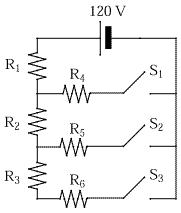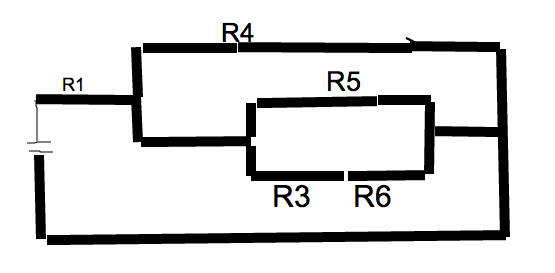I'm really glad I did this problem, b/c I got it wrong.
Don't look on the next post--it's the answer. Does anyone know a good site to practice these?
Kaplan:

What is the total effective resistance when all switches are closed?
Don't look on the next post--it's the answer. Does anyone know a good site to practice these?
Kaplan:
A student connected the following circuit. S1, S2 and S3 are switches that can be closed to make electrical connection. The resistors are rated at the following values: R1*=*R2*=*R3*=*R6 =*10*Ω, R4*=*R5 = 20*Ω. Unless otherwise indicated, the battery can be assumed to be ideal (no internal resistance).

What is the total effective resistance when all switches are closed?


